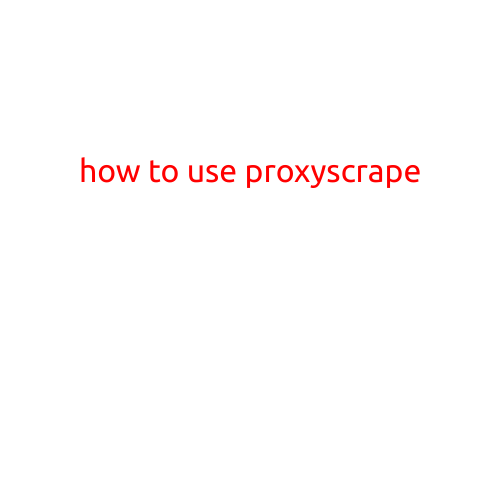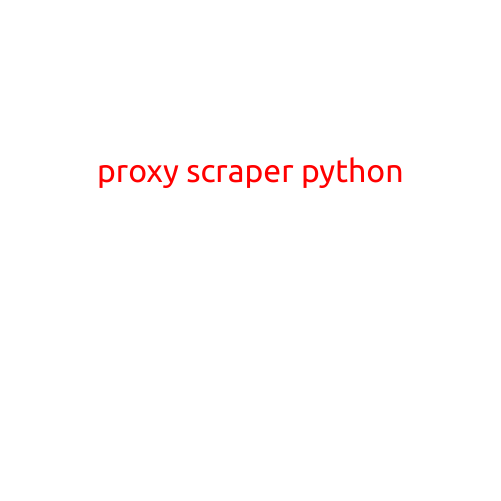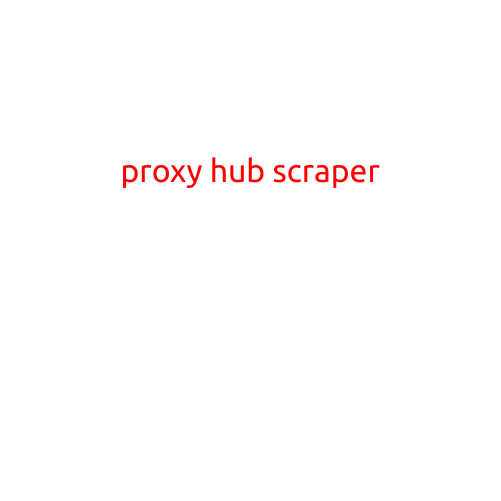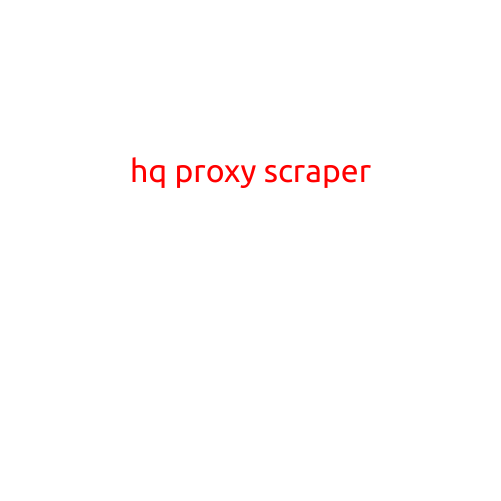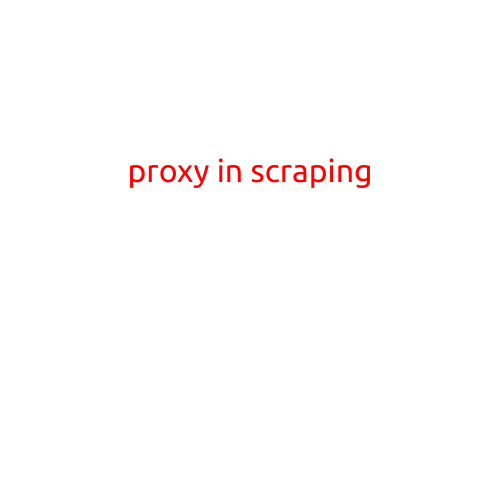
Proxy in Scraping: A Game-Changer for Web Scraping
In the world of web scraping, accessing data from websites is a crucial task. However, many websites have measures in place to prevent automated data extraction, making it difficult for scrapers to retrieve the desired information. This is where proxies come into play. In this article, we’ll delve into the world of proxies in scraping and explore how they can help you overcome common challenges.
What are Proxies?
In simple terms, a proxy is a middleman that sits between your scraper and the target website. When you make a request to the proxy, it forwards the request to the target website, retrieves the response, and then sends it back to your scraper. Proxies are often used to mask your IP address and make it seem like you’re accessing the website from a different location.
Why Use Proxies in Scraping?
- IP Rotation: We all know that many websites block IP addresses that exhibit scraping behavior. Proxies allow you to rotate your IP address, making it seem like you’re accessing the website from a different location.
- Avoid IP Blocking: By using a proxy, you can bypass IP blocking and access websites that would otherwise be inaccessible.
- Captcha Solving: Some websites use captchas to prevent automated scraping. Proxies can help solve captchas by rotating IP addresses and making it difficult for websites to identify your scraper.
- Anonymity: Proxies provide anonymity, making it difficult for websites to trace your scraper back to your IP address.
- Speed and Scalability: Proxies can improve the speed and scalability of your scraping process by distributing requests across multiple proxy servers.
Types of Proxies
- Public Proxies: Available for free, public proxies are often unreliable and may be blocked by websites.
- Private Proxies: Offered by proxy service providers, private proxies are more reliable and better suited for commercial use.
- Rotating Proxies: Automatically rotate IP addresses, making it difficult for websites to block your scraper.
- Socks Proxies: Support full request URLs, allowing you to proxy requests to specific hosts.
Best Practices for Using Proxies in Scraping
- Test Proxies: Before using a proxy for scraping, test it to ensure it’s working correctly and not blocking your requests.
- Rotate Proxies: Rotate your proxies regularly to avoid IP blocks and maintain anonymity.
- Use Proxy Management Tools: Use proxy management tools to automate the process of switching between proxies.
- Monitor Log Files: Monitor your log files to identify issues with proxies and troubleshoot as needed.
Conclusion
In conclusion, proxies are a game-changer for web scraping. By using a proxy, you can overcome common challenges such as IP blocking, captchas, and anonymity issues. With the right proxy in place, you can extract data from websites with ease and confidence. Remember to follow best practices for using proxies in scraping to ensure a successful and sustainable scraping process.

